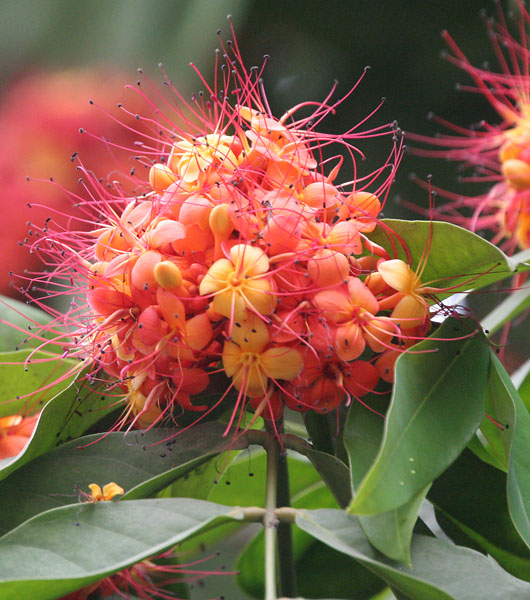Economic importance of Tectona grandis

Family: Lamiaceae
Genus: Tectona
Species: T. grandis
Common name: Teak
Origin: India
Description: Tectona grandis is a large, deciduous tree. The very large leaves are shiny above, hairy below. Flowers small, mauve to white and arranged in large, flowering heads. Fruit is a drupe and round, hard and woody, enclosed in an inflated, bladder-like covering; pale green at first, then brown at maturity. Each fruit may contain 0 to 4 seeds.
Economic Importance:
- Wood very durable, resistant to fungi. Used for poles, beams, trusses, columns, roofs, doors, window frames, flooring, planking, panelling, and staircases, and other constructional work. One of the best timbers for furniture and cabinet-making, wagon and railway carriages. Due to its better shape-retention ability, teak is popular in marine constructions and is a class by itself for boat- and ship building, particularly for decking. On account of its resistance to chemicals, teak articles are used in chemical laboratories; suitable for casks and vats for shipping corrosive liquids and for storing vegetable oils, fruit syrups, chutneys etc.

Tectona grandis_Leaves - Teak is employed for sound – boards of musical instruments, keys etc. and for different grades of plywood.
- Wood waste in the form of wood- shavings and sawdust is used for chip-boards, fibreboards, and plastic boards.
- Leaves contain about 6% tannin and a dye; also used for thatching. Oily product obtained by distillation of wood chips applied to eczema. A plaster made from the powdered wood is a good remedy for splitting headaches.
- Kernels yield fatty oil which is used in scabies and to promote the growth of hair. Flowers used in biliousness, bronchitis, and urinary discharges. Both flowers and seeds considered diuretic. In Ayurvedic system, the wood is considered as a laxative, sedative for the uterus, good for piles, dysentery and leucoderma. Roots were used for urinary tract problems. Bark has been used to treat diabetes.
- Bark astringent, used in bronchitis. Root bark used for colouring matting. Dyes are produced from the root bark and young leaves and employed for use in paper products and cloth manufacture. Dyes may be yellow-brown or red-brown. Dye from leaves is used for dying cloth especially wool and cotton. In Java, Indonesia, the sawdust is burnt as incense.
4 Comments



Hi!
Am Tanzanian and am about to start the project of teak! My question is what type of teak can be grown in Tanzania?
Hi, teak is teak, there are no special species of teak. It’s just depends on climate. For further assistance you can visit forest department office, or Ministry of Natural Resources & Truism, Dar es salaam or visit forest office of Turiani, Vomero district, Morogoro or Tanga region or Iffakara Region.
We are not sure about Tanzania. You should try to consult an agriculture/ silviculture specialist in your country.